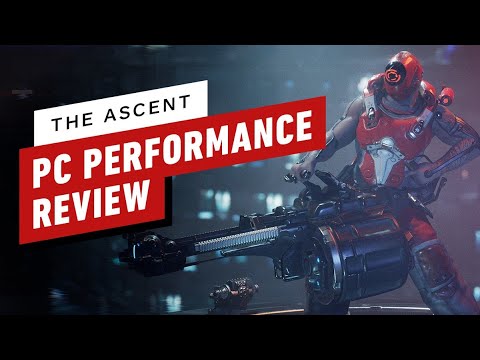From humble beginnings in university labs, where students once battled for bragging rights and a year’s subscription to Rolling Stone, esports has exploded into a global phenomenon. What was once a niche pursuit is now a commercial powerhouse, captivating millions and challenging traditional definitions of sport. This remarkable transformation isn`t accidental; it`s a meticulously engineered journey, driven by relentless technological innovation, the magnetic pull of charismatic players, and increasing recognition from institutions worldwide.
The Unseen Engineering of Victory: Precision Hardware
At the heart of every highlight-reel play and championship victory lies a truth often overlooked: esports is fundamentally a technology story. Unlike traditional sports where the ball, track, or field remain largely static, the competitive gaming landscape is in constant flux, demanding perpetual advancements in the tools of engagement. Peripheral brands like Razer, a veteran in this arena since 1998, have been instrumental in this evolution, meticulously crafting hardware that keeps pace with — and often anticipates — the escalating demands of pro players.
The journey from the clunky, wired mice of yesteryear to today`s ultra-light, wireless, hyper-responsive devices illustrates this perfectly. As Jeff Chau, Razer`s Director of Global Esports, aptly notes, «every millisecond matters» in competitive play. Pro players, with their almost supernatural sensitivity, can discern the subtlest imperfections in a setup. This relentless pursuit of fractional milliseconds and ergonomic perfection drives companies to collaborate intimately with top athletes, leading to innovations like the DeathAdder V4 Pro mouse, engineered directly with Counter-Strike professionals. This isn`t just about making a better mouse; it`s about pushing the boundaries of what`s technically possible to give players an infinitesimal edge in an increasingly competitive environment.
The Pantheon of Pixels: Pro Players as Cultural Icons
While technology provides the canvas, it`s the players who paint the masterpieces. Esports has given rise to a new breed of celebrity – individuals who, through sheer skill and personality, transcend the screen to become global icons. Figures like League of Legends legend Lee `Faker` Sang-hyeok or Counter-Strike 2`s Nikola `NiKo` Kovač aren`t just athletes; they are «GOATS» (Greatest Of All Time), their every move scrutinized, celebrated, and emulated by millions of aspiring gamers.
This immense influence is a powerful force, understood and leveraged by brands. As Chau highlights, seeing an admired player wield a specific mouse or headset isn`t just an endorsement; it`s a potent «marketing proof point.» Razer`s decade-long partnership with Faker, culminating in special product launches like the Viper V3 Pro Faker edition, underscores this synergy. These collaborations bridge the gap between aspirational performance and tangible products, turning professional success into commercial triumphs and further solidifying the cultural footprint of esports.
From Digital Niche to Diplomatic Stage: Global Recognition
Perhaps the most compelling evidence of esports` meteoric rise is its increasing legitimization on the global stage. What was once dismissed as merely «playing video games» is now recognized by governments and international bodies as a legitimate sport, a viable career path, and even a tool for national prestige. The announcement of the Olympic Esports Games for 2027 and the inclusion of esports as a medal event in the Asian Games are watershed moments, signaling a fundamental shift in perception.
This governmental embrace brings tangible benefits. In South Korea, for instance, winning a gold medal in esports at the Asian Games can grant exemption from mandatory military service – a privilege typically reserved for Olympic medalists. Such policies elevate esports to the same professional capacity as traditional sports, attracting new talent and investment, and fundamentally changing how society views professional gaming careers. It’s a validation that few could have imagined just a generation ago.
The Horizon Beckons: AI, Adaptability, and Endless Potential
Looking to the future, the esports landscape promises continued dynamism. Razer, for one, is already charting new territories, particularly in the realm of Artificial Intelligence. With initiatives like the AI Centre of Excellence in Singapore and the innovative Project AVA – an AI coaching program designed to analyze player performance and provide feedback – the company aims to democratize skill improvement, helping both aspiring and established gamers refine their craft.
This focus on AI addresses a crucial challenge: as games become more complex and competitive, the learning curve steepens. AI-driven coaching offers a personalized pathway to mastery, potentially expanding the pool of «hardcore and enthusiast gamers» – a win-win for both players and the industry. The future will also be defined by a delicate balance: the enduring stability of established giants like Counter-Strike, which maintain massive player bases, and the constant emergence of disruptive new titles. From VALORANT to Marvel Rivals, new games will continuously challenge existing ecosystems, requiring industry leaders to remain agile. As Chau wisely advises, the path forward is to «follow the market, follow the players, follow the fans,» adapting to new trends and supporting the games that capture the collective imagination. Whether on mobile or new, unforeseen platforms, the next big esports title is always just around the corner, waiting to take the world by storm.
In essence, esports is a living, breathing ecosystem, fueled by the symbiosis of cutting-edge technology, unparalleled human talent, and an increasingly supportive global infrastructure. It`s a testament to innovation, competition, and the unifying power of play, promising an even more exhilarating journey in the years to come.

